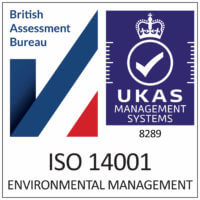The Best Ways to Store Unused Enriched Topsoil
Nov 22nd 2023
Whether you are an avid gardener or just starting out, one thing you may find yourself wondering is how to properly store unused enriched topsoil. With its numerous benefits for plant growth and soil structure, you wouldn’t want to let it go to waste. Fortunately, there are a few key methods that will ensure your topsoil remains fresh and ready for use whenever you need it. In this article, we will explore some of the best ways to store unused enriched topsoil, allowing you to maintain its quality and maximize its lifespan.
The Importance of Properly Storing Unused Enriched Topsoil
Properly storing unused enriched topsoil is crucial for ensuring its quality and preserving its nutrient content over time. By taking the necessary steps to store your topsoil correctly, you can prevent contamination, spoilage, and loss of vital nutrients. Additionally, maximizing the shelf life of your topsoil allows you to have a readily available supply whenever you need it for gardening or landscaping projects.
Preserving Nutrient Content
One of the primary reasons for properly storing unused enriched topsoil is to preserve its nutrient content. Enriched topsoil contains essential nutrients that are beneficial for the growth and development of plants. By storing the topsoil appropriately, you can prevent the loss of these nutrients through exposure to environmental factors such as excessive moisture, sunlight, or temperature fluctuations.
Preventing Contamination and Spoilage
Proper storage of unused enriched topsoil also helps prevent contamination and spoilage. Contamination can occur when the topsoil comes into contact with debris, chemicals, or pollutants, which can adversely affect its quality. Spoilage, on the other hand, can happen due to excessive moisture or the growth of molds, fungi, or bacteria. By storing the topsoil in a controlled environment and protecting it from external elements, you can minimize the risk of contamination and spoilage.
Maximizing Shelf Life
Maximizing the shelf life of your unused enriched topsoil is essential for ensuring that it remains usable for an extended period. Proper storage techniques can help slow down the breakdown of organic matter, maintain moisture levels, and prevent the growth of harmful microorganisms. By implementing effective storage practices, you can extend the shelf life of your topsoil and avoid the need for frequent replenishment.
Choosing the Right Storage Container
Selecting the appropriate storage container is vital in maintaining the quality of your unused enriched topsoil. The container plays a significant role in protecting the topsoil from external elements and preventing contamination or spoilage. Here are some considerations to keep in mind when choosing a storage container.
Selecting an Appropriate Container Size
When choosing a storage container, it is essential to consider the volume of topsoil you plan to store. Ensure that the container provides enough space for the topsoil while minimizing air gaps that could lead to increased moisture or exposure. It is generally recommended to choose a container that is slightly larger than the amount of topsoil you will store to allow for proper mixing or turning if necessary.
Opting for Sealed Containers
Sealed containers are an excellent choice for storing unused enriched topsoil as they provide an airtight environment that prevents moisture, pests, and contaminants from entering. Plastic bins or storage containers with secure lids are commonly used for this purpose. Ensure that the containers are durable, waterproof, and made from materials that will not react with the topsoil or release harmful chemicals.
Considerations for Bagged or Bulk Storage
Depending on the quantity of topsoil you need to store, you may opt for bagged or bulk storage methods. Bagged topsoil is typically stored in sturdy plastic bags or sacks that can be sealed tightly. Bulk storage involves using larger containers, such as bins or barrels, or even designated areas on your property for keeping a large volume of topsoil. Consider your available space, access needs, and the convenience of handling when deciding between bagged or bulk storage.
Preparing the Topsoil for Storage
Before storing your unused enriched topsoil, it is essential to prepare it adequately to maintain its quality during storage. Proper preparation involves removing debris, clumps, and weeds, salvaging any organic matter, and adjusting the moisture content.
Removing Debris and Clumps
Inspect the topsoil for any debris, rocks, branches, or large clumps that could hinder proper storage. Remove these unwanted elements to ensure a uniform texture and consistency. Breaking up any clumps will also facilitate better moisture distribution and aeration within the stored topsoil.
Salvaging any Organic Matter
Organic matter, such as leaves, grass clippings, or small twigs, can be beneficial for enriching the topsoil even further. Before storing, separate and set aside any salvageable organic matter to be reincorporated into the topsoil when needed. This can help replenish nutrients and promote the growth of beneficial microorganisms.
Moisture Content Adjustment
Proper moisture content is crucial for storing topsoil successfully. It is essential to strike a balance between too much moisture, which can lead to spoilage, and too little moisture, which can cause the topsoil to become dry and lose its nutrient content. Ensure that the topsoil is slightly moist but not overly wet before storing it. If necessary, add water gradually and mix thoroughly to achieve the desired moisture level.
Storing Topsoil in Indoor Spaces
Storing topsoil in indoor spaces offers several advantages, such as greater control over environmental factors and protection from weather elements. Follow these guidelines to ensure optimal topsoil storage indoors.
Utilizing a Controlled Environment
When storing topsoil indoors, it is crucial to create a controlled environment that can be regulated to maintain optimal conditions for the topsoil. This may involve utilizing a greenhouse, basement, garage, or storage room with proper ventilation, temperature control, and humidity management.
Choosing a Suitable Room or Area
Select a room or designated area specifically for topsoil storage, away from direct sunlight and extreme temperatures. Choose a location that can be easily accessed to retrieve the topsoil when needed. It is also advisable to keep the storage area separate from other materials to prevent contamination.
Maintaining Temperature and Humidity Levels
Maintaining stable temperature and humidity levels within the storage area is essential for preserving the quality of the topsoil. Avoid temperature extremes and fluctuations as they can impact moisture content and promote the growth of microorganisms. Aim for a temperature range of 50 to 70°F (10 to 21°C) and a humidity level between 40% to 60%.
Organizing and Labeling
To facilitate easy access and proper rotation of the stored topsoil, organize the containers systematically. Stack the containers in a stable and orderly manner, ensuring that they are properly sealed to prevent moisture or pest infiltration. Label each container with the date of storage and batch information to maintain proper inventory control.
Storing Topsoil in Outdoor Spaces
If indoor storage is not feasible, storing topsoil in outdoor spaces can still be successful with the right precautions. Follow these guidelines to ensure the proper storage of your unused enriched topsoil.
Protective Covering
When storing topsoil outdoors, it is essential to provide a protective covering to shield it from direct sunlight, rain, and other weather elements. Use a tarp or heavy-duty material to create a cover that extends over the stored topsoil entirely. Ensure that the covering is securely fastened to prevent it from blowing away or allowing moisture to seep in.
Avoiding Direct Sunlight and Rain
Direct exposure to sunlight can lead to excessive drying and loss of nutrients in the topsoil. Whenever possible, choose a storage location that offers shade or position the containers in an area that does not receive prolonged direct sunlight. Additionally, protect the stored topsoil from rain to prevent oversaturation and potential spoilage.
Preventing Pest Infestation
Outdoor storage can make topsoil more susceptible to pest infestations. To prevent pests, such as rodents or insects, from accessing the stored topsoil, consider elevating the containers on pallets or other supports. Additionally, ensure that the storage area is well-maintained, free from debris, and regularly inspected for signs of pest activity.
Securing the Storage Area
To safeguard the integrity of your stored topsoil, secure the storage area to prevent unauthorized access or tampering. Install fencing or barriers around the storage location, and if possible, use locks or additional security measures to deter theft or vandalism.
Alternative Methods of Topsoil Storage
While traditional storage methods are effective, alternative approaches may offer additional benefits depending on your specific requirements. Consider these alternative methods for storing unused enriched topsoil.
Utilizing Raised Beds or Planters
Instead of storing topsoil in containers, consider utilizing raised beds or planters to store and keep the soil aerated. This method provides easy access to the topsoil while allowing it to retain its natural properties and moisture content. Raised beds and planters also facilitate efficient drainage, reducing the risk of oversaturation.
Composting for Long-Term Storage
If you have a surplus of unused enriched topsoil, consider incorporating it into your composting system for long-term storage. Composting not only helps decompose organic matter but also enriches the soil over time, making it highly beneficial for future gardening or landscaping projects.
Vertical Storage Solutions
For those with limited storage space, vertical storage solutions offer an efficient way to store topsoil without occupying much floor area. Vertical gardening systems, such as stackable containers or hanging planters, can be utilized to store and access the topsoil conveniently. This method allows you to maximize your storage capacity while maintaining organized and accessible topsoil.






